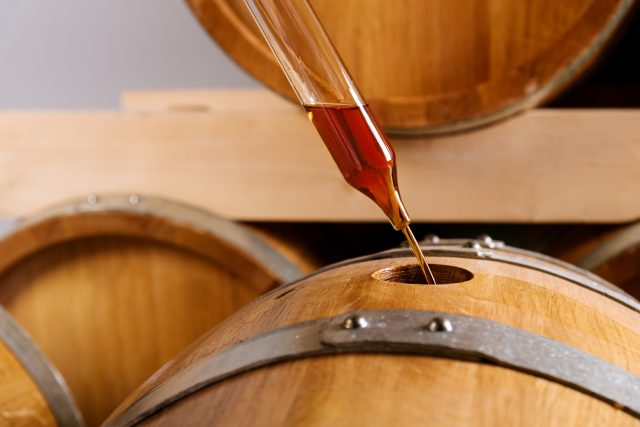This website uses cookies so that we can provide you with the best user experience possible. Cookie information is stored in your browser and performs functions such as recognising you when you return to our website and helping our team to understand which sections of the website you find most interesting and useful.
Researchers discover £90m opportunity for whisky waste
Scottish researchers have uncovered a new method of extracting whisky waste, which could be worth up to £90 million, for use in pharmaceuticals, food, drink and cosmetics.

The University of Aberdeen has worked with chemical and pharmaceutical company Ripcell to find new methods of extracting bio-based chemicals from whisky distillery waste.
Pernod Ricard-owned Scotch whisky brand Chivas Brothers provided samples of waste streams from 25 of its distilleries across Scotland for the project.
Researchers behind the study have discovered that by using a new method, waste products from the whisky-making process can be extracted for use in the pharmaceuticals, food, drink and cosmetics industries. They have now said the discovery could be worth up to £90 million in global chemical manufacturing markets.
How it works
The scientists discovered a method for extracting compounds, such as lactic acid, from pot ale and spent lees – co-products of the first and second stages of the whisky distillation process.
They used a separation technique known as liquid chromatography to isolate and extract acids from pot ale. They then adapted the method to retrieve additional solvents from spent lees.
Residue from pot ale is typically reused for applications such as animal feeds. Spent lees, on the other hand, have tended to be discarded until now. Up to 10 litres of spent lees are generated for every litre of whisky made.
Dr Eve Wildman, founder of Ripcell, called the potential of the process “huge”, considering that “around 2.6 billion litres of wastewater is produced from the Scottish whisky industry every year”.
She said: “For decades, the majority of these co-products have been used as animal feed, but we have found a new, more valuable option to deal with spent lees that could change the ways in which distilleries manage and process their residues.”
Compounds extracted from these waste products could be used for bio-based chemicals. Researchers behind the study argue that this method have a significantly lower carbon footprint compared to those produced through traditional petrochemical routes. Their estimates suggest that on a global scale, the new manufacturing method for target chemicals could reduce industry emissions by 392 million kg of CO2 equivalent per year.
Wildman said the discovery could be “transformational” for the chemicals industry. “By taking a sustainable approach to manufacturing key compounds, rather than using fossil fuels, RIPCELL can help to reduce greenhouse gas emissions from the production process,” she said.
The next phase will involve scaling up the separation process to prove its viability at an industrial scale.
Dr Liz Fletcher, director of business engagement at the Industrial Biotechnology Innovation Centre (IBioIC), which funded the study, said: “This project is a brilliant example of how we can add economic value by taking a circular approach to co-products and applying biotechnology. For both whisky producers and the chemicals industry, this process marks a significant step forward in reducing the environmental impact of manufacturing.”
Related news
Bourgogne wine see global growth despite difficult market conditions

